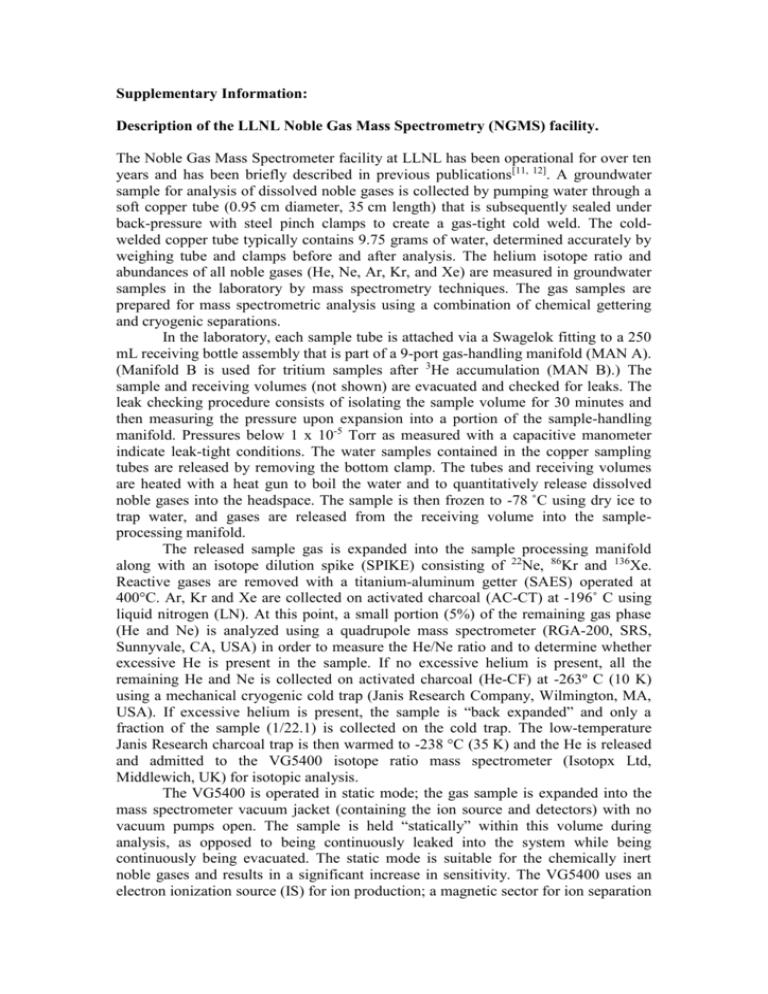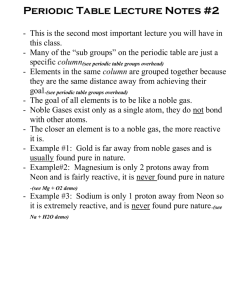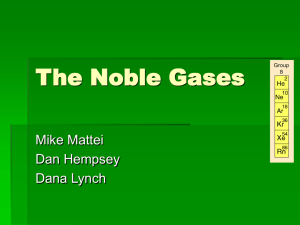rcm6704-sup-0001-SuppInfo
advertisement

Supplementary Information: Description of the LLNL Noble Gas Mass Spectrometry (NGMS) facility. The Noble Gas Mass Spectrometer facility at LLNL has been operational for over ten years and has been briefly described in previous publications[11, 12]. A groundwater sample for analysis of dissolved noble gases is collected by pumping water through a soft copper tube (0.95 cm diameter, 35 cm length) that is subsequently sealed under back-pressure with steel pinch clamps to create a gas-tight cold weld. The coldwelded copper tube typically contains 9.75 grams of water, determined accurately by weighing tube and clamps before and after analysis. The helium isotope ratio and abundances of all noble gases (He, Ne, Ar, Kr, and Xe) are measured in groundwater samples in the laboratory by mass spectrometry techniques. The gas samples are prepared for mass spectrometric analysis using a combination of chemical gettering and cryogenic separations. In the laboratory, each sample tube is attached via a Swagelok fitting to a 250 mL receiving bottle assembly that is part of a 9-port gas-handling manifold (MAN A). (Manifold B is used for tritium samples after 3He accumulation (MAN B).) The sample and receiving volumes (not shown) are evacuated and checked for leaks. The leak checking procedure consists of isolating the sample volume for 30 minutes and then measuring the pressure upon expansion into a portion of the sample-handling manifold. Pressures below 1 x 10-5 Torr as measured with a capacitive manometer indicate leak-tight conditions. The water samples contained in the copper sampling tubes are released by removing the bottom clamp. The tubes and receiving volumes are heated with a heat gun to boil the water and to quantitatively release dissolved noble gases into the headspace. The sample is then frozen to -78 ˚C using dry ice to trap water, and gases are released from the receiving volume into the sampleprocessing manifold. The released sample gas is expanded into the sample processing manifold along with an isotope dilution spike (SPIKE) consisting of 22Ne, 86Kr and 136Xe. Reactive gases are removed with a titanium-aluminum getter (SAES) operated at 400°C. Ar, Kr and Xe are collected on activated charcoal (AC-CT) at -196˚ C using liquid nitrogen (LN). At this point, a small portion (5%) of the remaining gas phase (He and Ne) is analyzed using a quadrupole mass spectrometer (RGA-200, SRS, Sunnyvale, CA, USA) in order to measure the He/Ne ratio and to determine whether excessive He is present in the sample. If no excessive helium is present, all the remaining He and Ne is collected on activated charcoal (He-CF) at -263º C (10 K) using a mechanical cryogenic cold trap (Janis Research Company, Wilmington, MA, USA). If excessive helium is present, the sample is “back expanded” and only a fraction of the sample (1/22.1) is collected on the cold trap. The low-temperature Janis Research charcoal trap is then warmed to -238 °C (35 K) and the He is released and admitted to the VG5400 isotope ratio mass spectrometer (Isotopx Ltd, Middlewich, UK) for isotopic analysis. The VG5400 is operated in static mode; the gas sample is expanded into the mass spectrometer vacuum jacket (containing the ion source and detectors) with no vacuum pumps open. The sample is held “statically” within this volume during analysis, as opposed to being continuously leaked into the system while being continuously being evacuated. The static mode is suitable for the chemically inert noble gases and results in a significant increase in sensitivity. The VG5400 uses an electron ionization source (IS) for ion production; a magnetic sector for ion separation with a mass resolving power sufficient to completely resolve 3He atomic ions from 1 2 H H and 1H3 molecular ions. The mass spectrometer uses a conventional 17-stage electron multiplier (EM) and a SR400 pulse counting system (SRS, Sunnyvale, CA, USA) for measuring 3He. Helium-4 is measured using a Faraday Cup (FC) with a 1011-ohm feedback resistor. The Ar, Kr and Xe collected on the activated charcoal LN trap are desorbed at 150 °C. The Kr and Xe are subsequently sorbed onto a stainless steel cold trap (SSCT) using LN at -196 °C. The Ar pressure is measured using a high sensitivity capacitive manometer and pumped out. The remaining Kr and Xe collected on the stainless steel LN trap are desorbed at room temperature and are measured with the quadrupole mass spectrometer. The primary calibration standards for dissolved noble gas measurements are air and water containing noble gases in equilibrium with air. Four air standards are analyzed by introducing air into the sample manifold using a pipette system consisting of a 4 L bottle filled with a mixture of air and known quantities of argon, krypton and xenon (AIR) connected to the manifold via a 0.2cm3 aliquot volume. For each aliquot taken, the air reservoir is depleted by 0.005%. The number of aliquots removed is tracked by the computer control system and recorded in a computer file. Manifold blank measurements are made by not opening any of the ports to a sample or standard. The average reproducibility of the air standard within each run is listed in Table S1. Water standards are prepared by equilibrating deionized tap water with air at a known temperature (approximately room temperature, 25º C) and atmospheric pressure. The equilibration takes place in a thermally insulated reservoir filled with about 25 L of water; the large volume allows for stable temperature during equilibration. The duplicate precision of the instrument (including the sampling procedure) was calculated from 45 duplicates measured between 2010 and 2013, collected by USGS staff under the Priority Basin Program [42]. The reported uncertainty is 2% for 3 He/4He, 4He, Ne and Ar, and 3% for Kr and Xe. Table S1: Characteristics of the traditional LLNL Noble Gas Mass Spectrometers 3 4 He/4He He Ne Ar Kr Measurement VG5400 VG5400 SRS Capacitance SRS RGA200 manometer RGA200 Air standard 1.5% 0.5% 1.4% 0.1% 1.5% reproducibility Duplicate 2.6% 4.7% 6.4% 2.5% 1.7% precision Typical 2% 2% 2% 2% 3% reported uncertainty Xe SRS RGA200 2.0% 3.0% 3%










